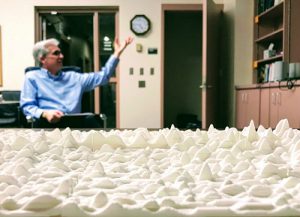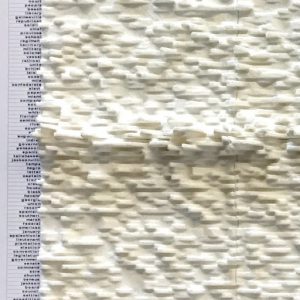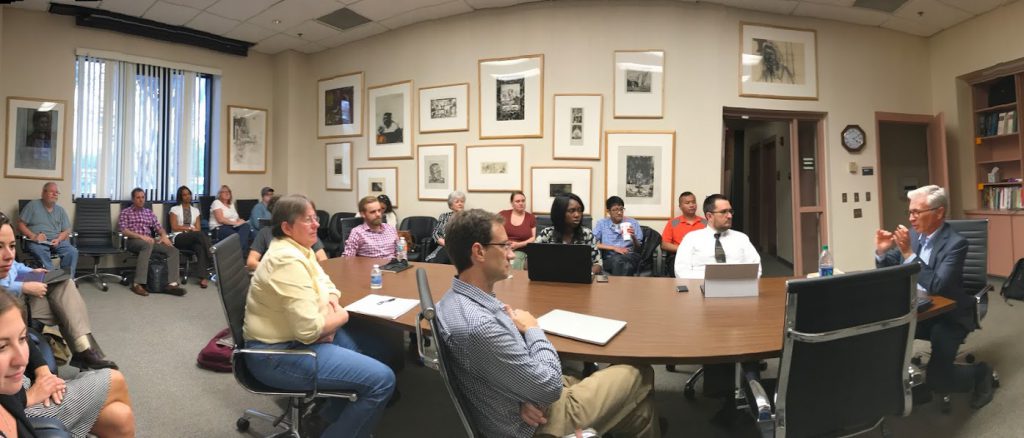
Visitors to the Florida Historical Quarterly offices on the fourth floor of Colbourn Hall will soon find displayed there a 3D data sculpture representing 100 top key terms from the journal’s 85-year run of digitized back issues, courtesy of Ohio State University historian David J. Staley. The sculpture resembles a topographical map, with peaks and valleys corresponding to the journal’s most commonly used key terms. Some terms, such as “Indian,” demonstrate the journal’s year-to-year continuity, while others, such as “woman,” reveal dramatic change over time.
Dr. Staley presented the sculpture to Public History director Scot French and FHQ editor Connie Lester during a visit to UCF as the invited guest of the History Department and the Texts & Technology Ph.D. program. In his public talk, Dr. Staley described the sculpture as a product of what James English calls “The Creative Humanities” — an “area of overlap between the traditional humanities disciplines, the digital humanities, and the arts.” Such work, Staley observed, reflects a growing humanistic emphasis on learning by building, creating, making.
 Dr. Staley welcomed the embrace of “maker” culture within the digital humanities and posed a series of questions: With digital fabrication tools, 3-D printers and CNC routers a potential part of the humanist’s toolkit, what will humanists create with these tools? What sorts of things and objects will humanists make? Staley concluded that humanists will “create material forms” — like his own FHQ sculpture — “that make evident our reading of texts, the material traces of our reading.”
Dr. Staley welcomed the embrace of “maker” culture within the digital humanities and posed a series of questions: With digital fabrication tools, 3-D printers and CNC routers a potential part of the humanist’s toolkit, what will humanists create with these tools? What sorts of things and objects will humanists make? Staley concluded that humanists will “create material forms” — like his own FHQ sculpture — “that make evident our reading of texts, the material traces of our reading.”
Dr. Staley’s public talk and sculpture presentation grew out of a multi-year research collaboration with UCF Public History faculty. In Spring 2012 he visited UCF to consult on the History Department’s efforts to better integrate Digital History into the Public History M.A. track. During that visit, he talked with Drs. French and Lester about partnering on a project to data-mine the Florida Historical Quarterly. That led to a multi-semester project that involved research teams at UCF, Ohio State, and the University of Virginia. The results of that collaboration have been presented at several major conferences and have been published, in digital poster form, in the Journal of Digital Humanities. In January 2016, two UCF History graduate students who worked on the FHQ data-mining project — Sarika Joshi and Kevin Mercer — joined Drs. Staley, French, and Lester on a panel, “Journals as Intellectual History: A New Historiography Through Digital Mapping,” at the American Historical Association annual conference in Atlanta. Alex Lichtenstein, editor of the American Historical Review, moderated.
Dr. Staley is currently working on a much larger installation based on his data mining of the American Historical Review. The author of three books — History and Future: Using Historical Thinking to Imagine the Future (2006), Computers, Visualization and History, (2003, 2nd ed., 2013); and Brain, Mind and Internet: A Deep History and Future (2014) — he is a frequent guest speaker, via Skype, in UCF Digital and Public History courses.
Be sure to check out a news piece on Staley’s visit!
